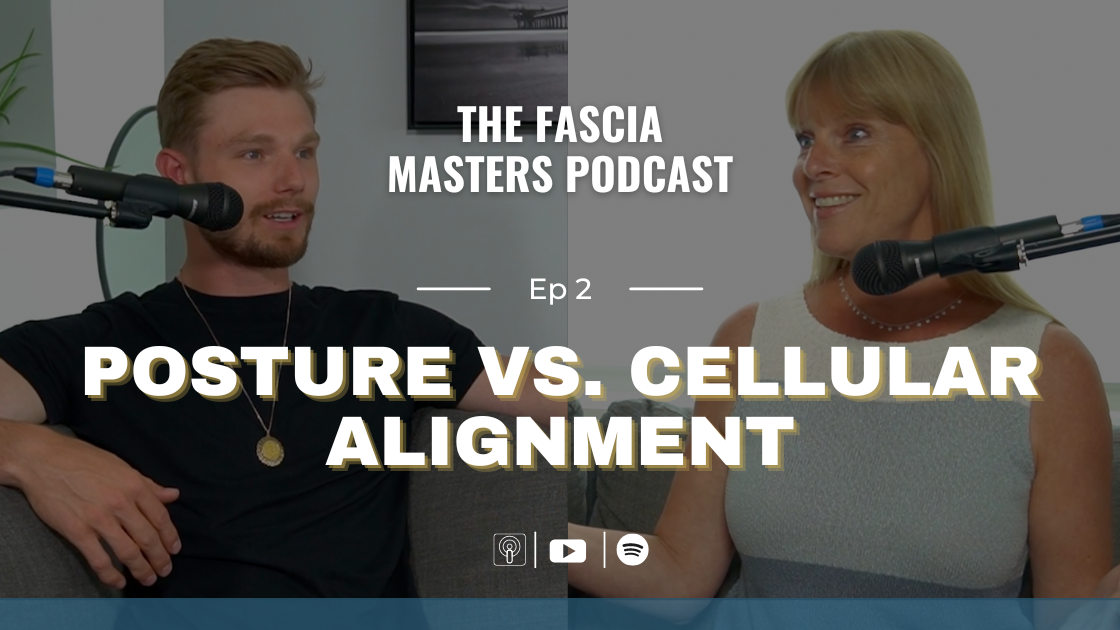Posture Vs. Cellular Alignment | The Fascia Masters, Season 2 – Episode 2


Have you ever thought about the difference between having good posture and achieving cellular alignment? In a recent discussion, we delved into this intriguing topic and uncovered some surprising insights. Today we are exploring the realms of posture and cellular alignment, and discovering why the latter holds the key to not only pain relief but also overall health and vitality.
Posture is often seen as the way our physical bodies are positioned at any given moment. It's influenced by factors such as daily habits, handedness, and even the dominant side of our bodies. Around 70% of people are right-handed, leading to imbalances in their posture. For example, a right-handed person might unconsciously shift more weight to their left side, creating grooves in the fascia, the connective tissue that supports our body structurally. Over time, these imbalances can lead to adhesions forming between layers of fascia, further affecting our alignment.
On the other hand, cellular alignment involves the optimal positioning of trillions of cells within the body, facilitated by the interconnected fascia. When cells are properly aligned, they create space, allowing for better nutrient absorption and toxin removal. This ease of flow contributes to overall well-being and minimizes pain and discomfort. Achieving cellular alignment requires addressing imbalances in fascia, releasing patterns of tension, and allowing cells to return to their rightful positions.
To achieve cellular alignment and unlock true vitality, it's crucial to address the three pillars: creating space, inflating space, and maintaining space. While the third pillar of maintaining space and balanced movement might be the most challenging, it's equally important. Developing ambidextrous habits, such as using the non-dominant hand for everyday tasks, can help counteract the effects of constant dominance on one side of the body.
Sports and physical activities can also contribute to imbalances. Many athletes engage in symmetrical sports, which involve repetitive movements in a single direction. This can lead to imbalanced fascia and alignment issues. The key is to complement such activities with targeted exercises and habits that balance the fascial patterns. For example, a tennis player who consistently uses their dominant arm should actively strengthen the non-dominant side to maintain equilibrium.
Understanding the relationship between posture and cellular alignment opens doors to a healthier, pain-free life. Shifting our focus from surface-level posture corrections to deeper cellular alignment can transform our well-being. By creating balance in the fascia, releasing tension, and utilizing both sides of the body as evenly as possible, we empower our cells to thrive in optimal conditions.
Whether it's adjusting our daily habits, embracing discomfort, or fine-tuning our exercise routines, the journey toward cellular alignment is one that is worthwhile. As we learn to listen to our bodies and foster a harmonious balance within, we pave the way for long-term health and vitality. So, let's not merely stand up straight; let's stand tall in cellular alignment.
You can find us on Spotify or Apple Podcasts. Don't forget to subscribe on your preferred platform - and leave us a comment, we'd love to hear your feedback! Listen to today's episode below.
Learn more about decompressing your fascia in our FREE Ultimate Fascia Decompression Kit.

Responses